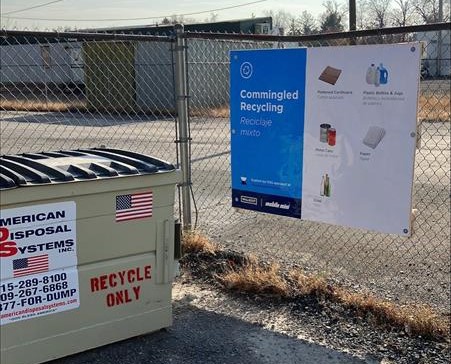Building A Circular Economy


Our Approach
WillScot Mobile Mini has implemented circular economy practices for decades. Our office and storage units are designed to be reused, relocated, reconfigured, and refurbished. Circular by design, our lease-and-renew business model helps our customers achieve their ESG goals by reducing material usage, emissions, and costs.
Our Actions
Our commercial-grade office units are reused by different customers on average seven times over their 20-year lifetime with minimal refresh efforts required before each new recycle and reuse. When necessary, we give them new life through complete refurbishment, extending asset life up to another 10 years, allowing many of our units to be in service for close to 30 years. With the cost of full refurbishment at 20-30% of the cost of a new unit, unit refurbishment is more capital efficient, significantly extending their life.
Our most innovative office space is FLEX™, a panelized product in which walls can be reconfigured and reused, thus eliminating wood waste.
Our portable storage spaces begin as end-of-life shipping containers that we refurbish at our best-in-class modernization facilities so we can put them into service like new. At the true end of life of a storage unit, the steel is sent to a recycling facility.
Our line of Essentials (furniture and other items customers need to make both their space and storage ready to work on day one) is an important dimension to building a circular economy because we’re able to reuse, repair, and maintain Essentials between rentals. Our Essentials greatly reduce material usage for us and our customers, obviating the need for a single-use purchase of new materials and disposal of them at the end of the project. Think of Essentials as ‘built-in sustainability.’
To improve our circular economy model even further, we have begun development of an operational waste diversion program as part of our strategic waste management efforts. We conducted nine waste composition studies at our branches to identify opportunities for increased recycling and reduction of operational waste generation for materials such as trash, wood, metal, and cardboard. Other strategies to reach our goals include reducing packaging, eliminating single-use products where feasible, increasing use of reusable materials, educating our employees on proper sorting, introducing consistent signage, and centralizing and optimizing our waste collection points. We've also launched consistent, branded waste signage to our branch network that is customizable based on branch material diversion streams as well as launched a pilot in-kind donation program for retired Essentials assets to be given an extended life through nonprofit partnerships.
10,000 lbs of waste sorted
These efforts have led us to sort more than 10,000 pounds of waste. Our analysis demonstrated that by optimizing our collection frequency, we have the potential to reduce hauling by 43%.
